ELAR K.2
Developing and sustaining foundational language skills: listening, speaking, reading, writing, and thinking--beginning reading and writing. The student develops word structure knowledge through phonological awareness, print concepts, phonics, and morphology to communicate, decode, and spell. The student is expected to:
- (1) demonstrate phonological awareness by:
- (A) identifying and producing rhyming words;
- (i) recognizing spoken alliteration or groups of words that begin with the same spoken onset or initial sound;
- (ii) identifying the individual words in a spoken sentence;
- (iii) identifying syllables in spoken words;
- (iv) manipulating syllables within a multisyllabic word; and
- (v) blending syllables to form multisyllabic words;
- (vi) segmenting multisyllabic words into syllables;
- (vii) blending spoken onsets and rimes to form simple words;
- (viii) blending spoken phonemes to form one-syllable words;
- (ix) segmenting spoken one-syllable words into individual phonemes;
- (x) demonstrate and apply phonetic knowledge by:
- (B) identifying and matching the common sounds that letters
represent;
- (i) using letter-sound relationships to decode, including VC, CVC, CCVC, and CVCC words;
- (ii) recognizing that new words are created when letters are changed, added, or deleted such as it - pit - tip - tap; and
- (iii) identifying and reading at least 25 high-frequency words from a research-based list;
- (iv) demonstrate and apply spelling knowledge by:
- (C) spelling words with VC, CVC, and CCVC;
- (i) spelling words using sound-spelling patterns; and
- (ii) spelling high-frequency words from a research-based list;
- (iii) demonstrate print awareness by:
- (D) identifying the front cover, back cover, and title page
of a book;
- (i) holding a book right side up, turning pages correctly, and knowing that reading moves from top to bottom and left to right with return sweep;
- (ii) recognizing that sentences are comprised of words separated by spaces and recognizing word boundaries;
- (iii) recognizing the difference between a letter and a printed word; and
- (iv) identifying all uppercase and lowercase letters; and
- (v) develop handwriting by accurately forming all uppercase and lowercase letters using appropriate directionality.
- (A) identifying and producing rhyming words;
- Plus Plan
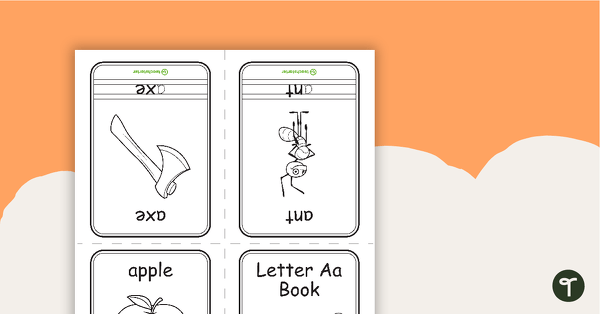
Little Alphabet Book Worksheets (A-Z)
A set of 26 worksheets to assist younger students with letter recognition and formation.
- Plus Plan
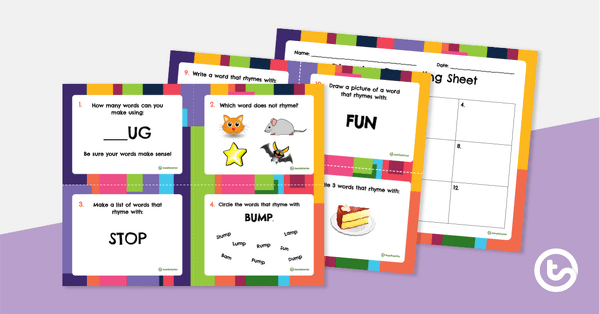
Rhyming Task Cards
A set of 12 task cards to practice rhyming.
- Plus Plan
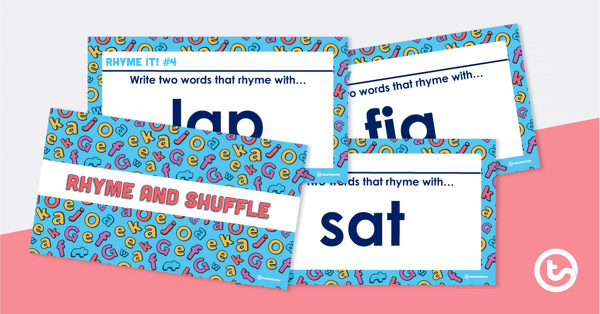
Rhyme and Shuffle - Rhyming PowerPoint Game
Practice producing rhyming words while being active with this whole-class movement game.
- Plus Plan
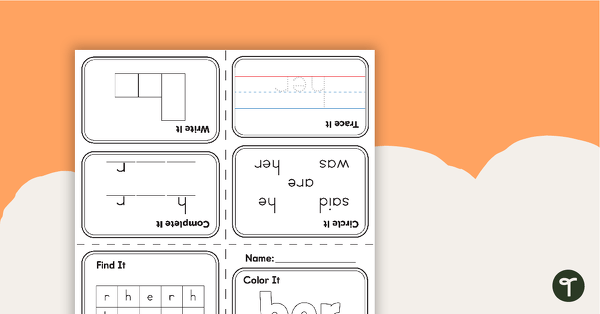
My Little Sight Word Book - Her
A little book of activities for the sight word ‘her’.
- Plus Plan
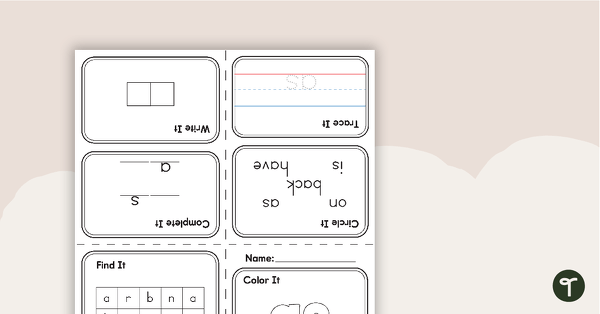
My Little Sight Word Book - As
A little book of activities for the sight word 'as'.
- Plus Plan
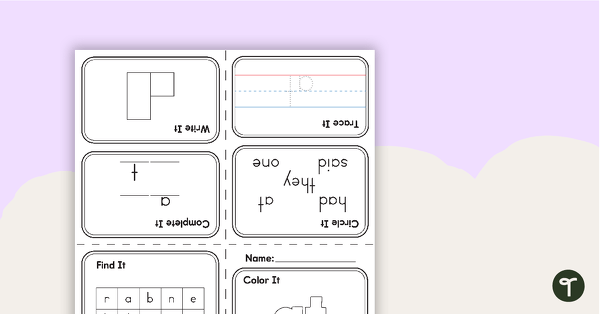
My Little Sight Word Book - At
A little book of activities for the sight word 'at'.
- Free Plan

My Little Sight Word Book - Said
A little book of activities for the sight word ‘said’.
- Plus Plan
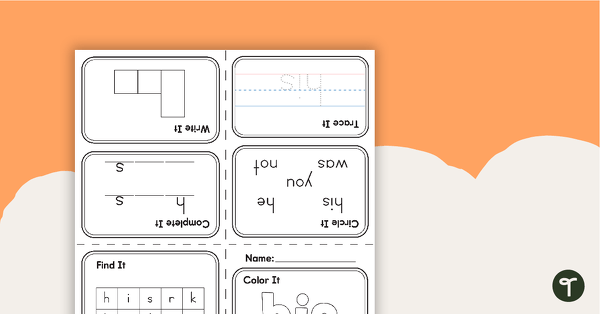
My Little Sight Word Book - His
A little book of activities for the sight word 'his'.
- Plus Plan
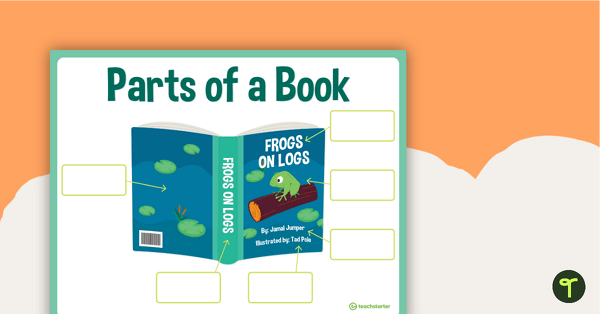
Parts of a Book Cut and Paste Activity
Identify the various parts of a book with this cut and paste worksheet.
- Plus Plan
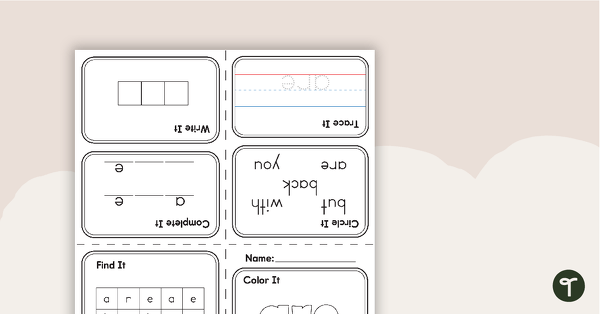
My Little Sight Word Book - Are
A little book of activities for the sight word 'are'.
- Plus Plan
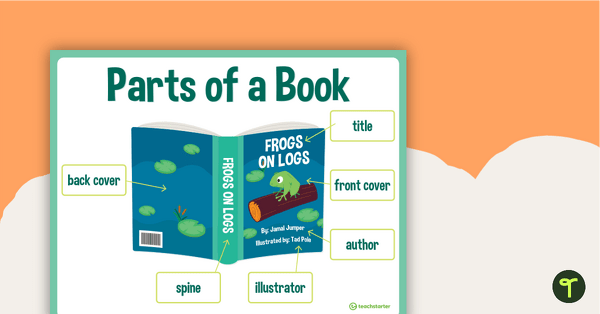
Parts of a Book Poster
A poster that displays the parts of a book.
- Plus Plan
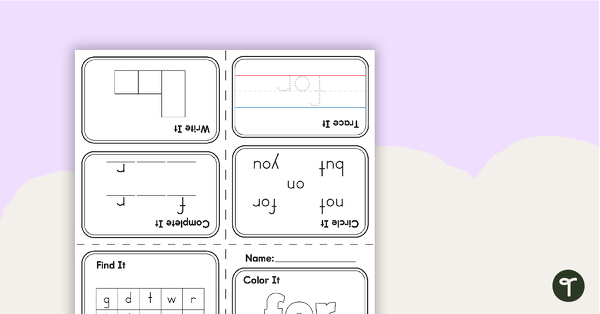
My Little Sight Word Book - For
A little book of activities for the sight word ‘for’.
- Plus Plan

SPLAT! Phoneme Substitution Game - Short E Words
Practice substituting initial and final phonemes in short e words with this set of 30 task cards.
- Plus Plan
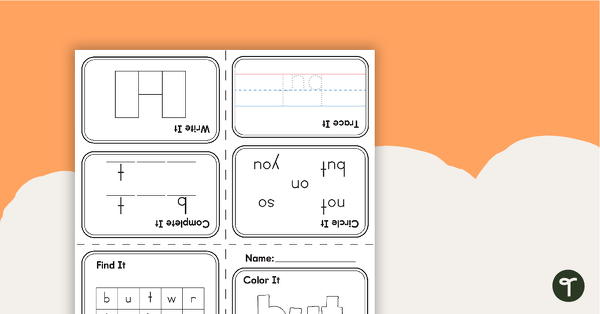
My Little Sight Word Book - But
A little book of activities for the sight word 'but'.
- Plus Plan
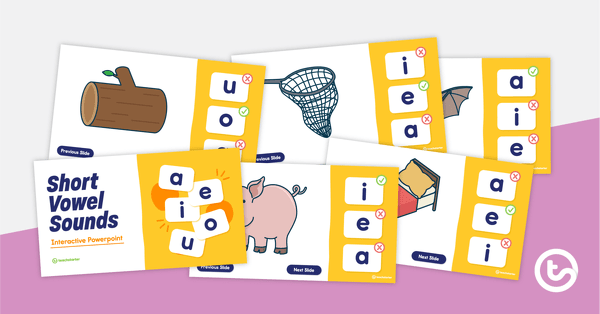
Identifying Short Vowel Sounds Interactive PowerPoint
An interactive quiz to practice identifying short vowel sounds in words.
- Plus Plan

My Little Sight Word Book - One
A little book of activities for the sight word ‘one’.
- Plus Plan
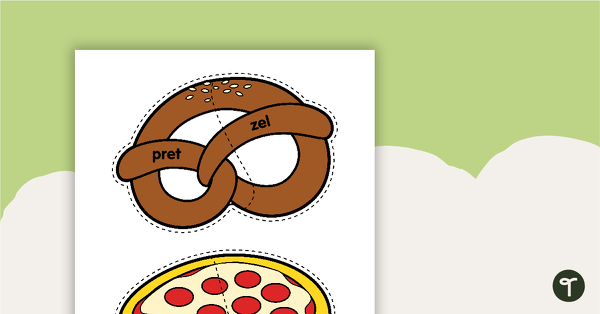
Food-Themed Syllable Puzzle
A fun food-themed phonics activity for lower years that helps to develop syllable recognition.
- Plus Plan
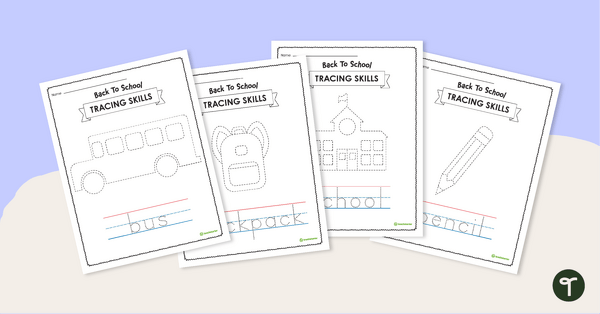
Back to School Tracing Skills
Practice tracing and fine motor skills with this set of 8 back-to-school tracing worksheets.
- Plus Plan

SPLAT! CCVC Word Game
A set of 36 task cards to practice decoding and reading CCVC words.
- Plus Plan
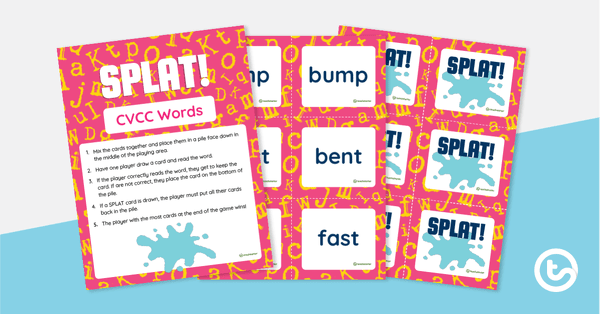
SPLAT! CVCC Word Game
A set of 36 task cards to practice decoding and reading CVCC words.
- Plus Plan
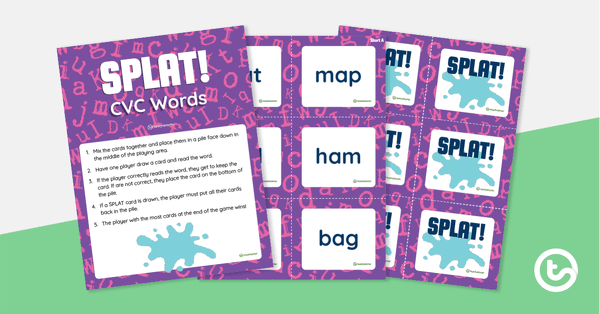
SPLAT! CVC Word Game
A set of 36 task cards to practice decoding and reading 3-letter words.
- Plus Plan
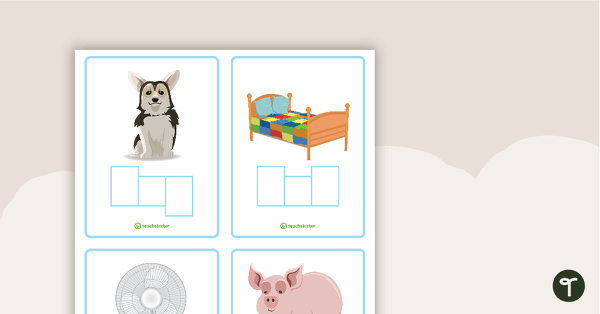
CVC Letter Boxes Task Cards
A set of 24 CVC letter boxes task cards.
- Plus Plan
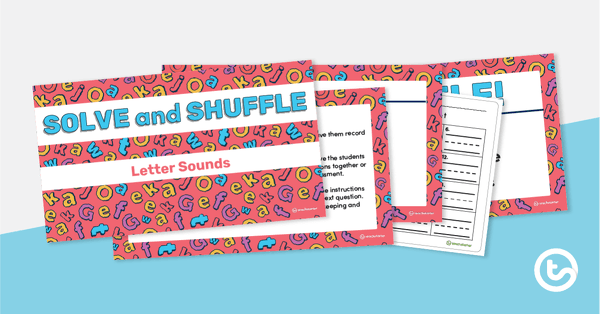
Solve and Shuffle - Letter Sounds PowerPoint Game
An active PowerPoint game to practice initial letter sounds.
- Plus Plan
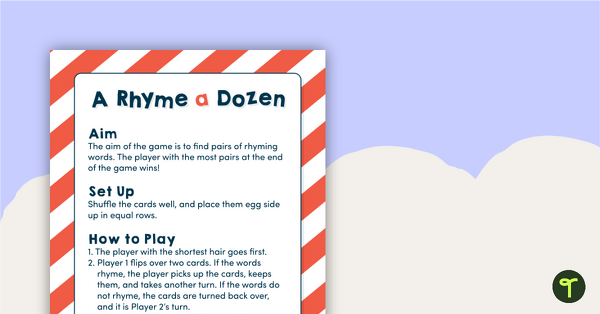
A Rhyme a Dozen - Matching Game
Review your students' knowledge of rhyming words with this memory-style card game.
- Plus Plan
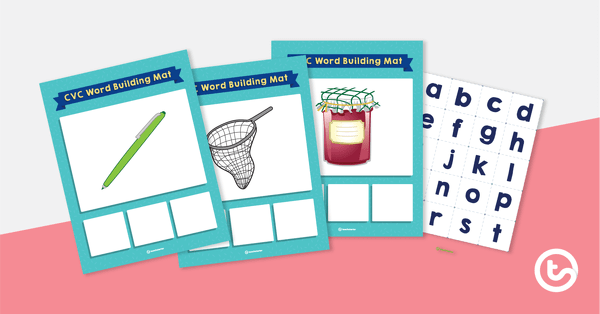
CVC Word Building Mats
A set of 25 word building mats using consonant-vowel-consonant (CVC) words.
- Plus Plan

Letter Sound Knowledge Activity Cards
Practice identifying and writing the beginning sounds of words with this set of 28 task cards with your students.
- Plus Plan
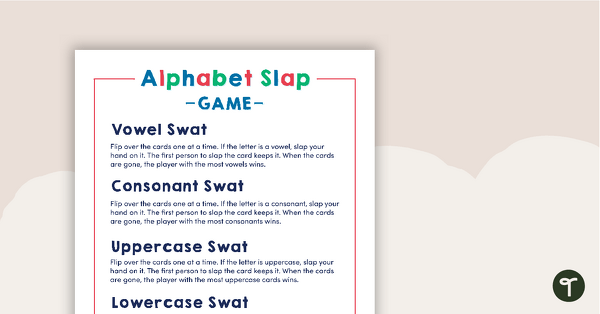
Alphabet Slap
A fun game for letter, consonant, and vowel recognition.
- Plus Plan

Sight Word Mini Books
A set of 12 mini sight word books to use as little readers with your students.
- Plus Plan
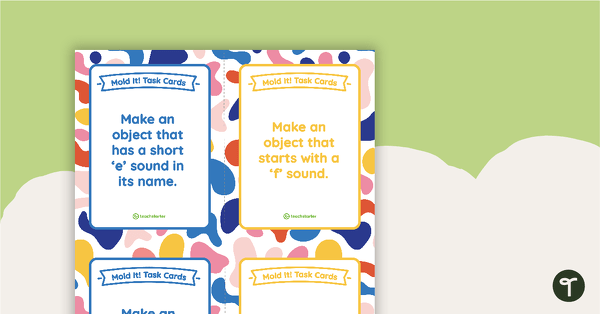
Mold It! Task Cards
A set of 28 task cards to use with modeling clay.
- Plus Plan
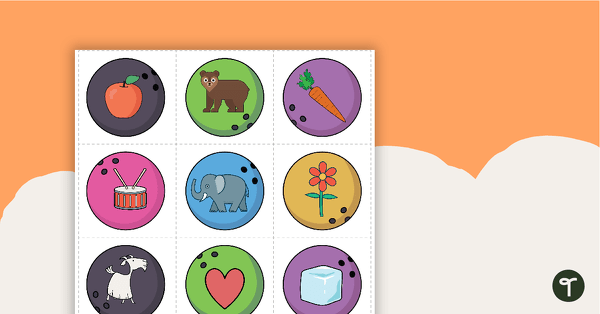
Bowling Game - Beginning Sounds
Practice applying letter-sound correspondence with 26 picture cards and letter pins.
- Plus Plan
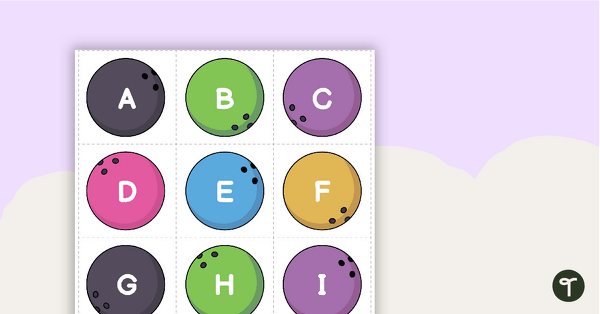
Bowling Game - Letter Match
Practice matching upper and lowercase letters with 26 letter bowling ball cards and pins.
- Plus Plan
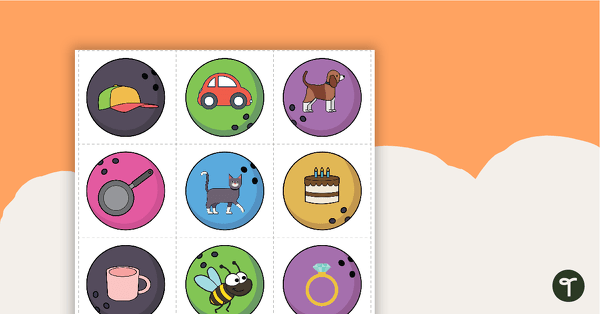
Bowling Game - Rhyming Words
Practice matching rhyming words with this set of 24 picture bowling ball cards and pins.